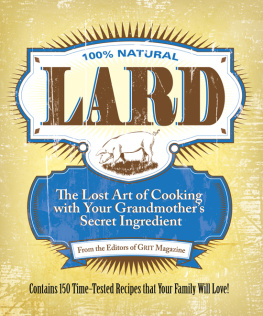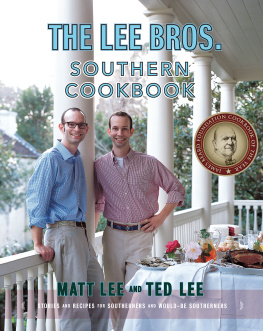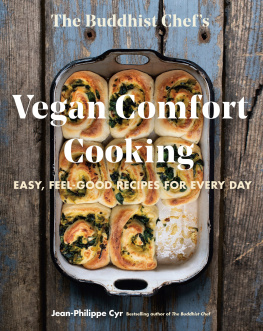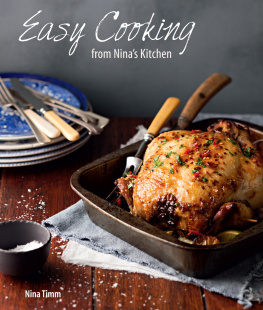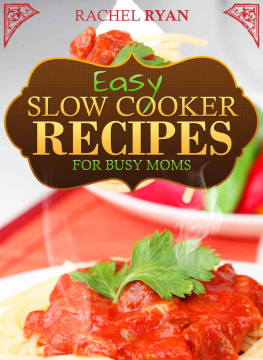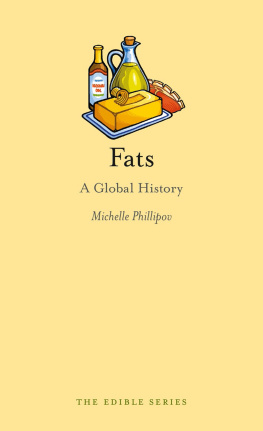Lard text copyright 2012 by Ogden Publications Inc. Photography copyright 2012 by Thomas Gibson. All rights reserved. No part of this book may be used or reproduced in any manner whatsoever without written permission except in the case of reprints in the context of reviews.
Andrews McMeel Publishing, LLC
an Andrews McMeel Universal company
1130 Walnut Street, Kansas City, Missouri 64106
www.andrewsmcmeel.com
ISBN: 978-1-4494-1040-7
Library of Congress Control Number: 2011932650
www.grit.com
www.LardCookbook.com
Design: Diane Marsh
Photography: Thomas Gibson
Food Stylist: Andrea Krakaw
Prop Stylist: Kate Dixon
Art Director: Tim Lynch
Contributing Editor: Karen Keb (photos )
Cover design by Tim Lynch
ATTENTION: SCHOOLS AND BUSINESSES
Andrews McMeel books are available at quantity discounts with bulk purchase for educational, business, or sales promotional use. For information, please e-mail the Andrews McMeel Special Sales Department:
ABOUT the AUTHOR
Grit Magazine has been published bimonthly since 1882, and celebrates country lifestyles of all kinds, while emphasizing the importance of community and stewardship. It offers practical advice; product reviews; livestock guides; gardening, cooking, and other do-it-yourself information; humor; and inspirational stories of folks who have moved to the country and loved it. It is published by Ogden Publications Inc., in Topeka, Kansas.
http://www.ogdenpubs.com/
The
LINGERING
LegacyofLard
By Oscar H. Will III
Editor in Chief of GRIT and CAPPERs Magazines
Pig fat has been used for centuries in processes ranging from lubrication, lighting, cooking, soap making, and just plain eating. Lard-based oils and greases were an important component of machinery and engine lubrication until some years after the dawn of the petroleum age. The first oil wells were drilled with machinery lubricated with lard. Even into the 1930s, hog farmers could earn more from the lard an animal might produce than from the meat and by-products.
The first documented use of lard as food dates to the 1400s, and the healthful fat was big business three hundred years later. So big was the lard industry that hogs were bred specifically for that purposethe meat was secondary to the fat. Historically, lard has been used in place of butter as a spread on breads and other starches; because of its properties as an excellent shortening, it remains prized by pastry chefs even today. Lard is an excellent cooking fat because it burns at a very high temperature and tends not to smoke as heavily as many other fats and oils.
Although it might seem to contradict conventional wisdom, we believe lard still has a place on your pantry shelfand some of the best-tasting pies depend on it. As it turns out, many of the negative health claims ascribed to lardand other animal fatsappear to have been largely exaggerated.
We humans crave the concentrated calories of animal fats. We are drawn to the aroma of foods fried in tallow (rendered beef fat) because animal fats have been a natural part of the human diet since the beginning. Consider that although those french fries you savor today have been fried in fats derived from plants, the folks doing the frying also added tallow flavor to the oil because the scent of foods fried in tallow is nearly impossible to resist.
In the United States, fatsanimal fats in particularhave been vilified over the past century as weve struggled with our collective health, particularly arterial health, and our collective weight. The somewhat naive notion that fat consumed equals fat gained spread like wildfire, and when discoveries were made that linked certain kinds of fats with cholesterol and coronary artery diseases, the corn industry was ready to move in with a highly processed magic bulletoleo, the perfect and healthy substitute for butter. Oleo now is often used synonymously with margarine, but margarine once contained animal fats such as lard. Delicious and nutritious animal fats such as lard were also replaced with a healthy and pure vegetable shortening that was pretty much guaranteed to keep Betty Crockers figure intact while preventing heart disease among the masses.
When the switch to healthy plant-derived fats failed to keep the weight off the American public, we went looking for other magic bullets. Thus was born the fat-free revolution. Once again, we substituted highly processed fat-free foods for the real deal. The result is that we gained even more weight than the Health Department thought possible. In retrospect theres little surprise in that result. It has to do with the fundamental nature of consuming fats, as well as the fact that today we expend less physical energy in an average day than we did many decades ago.
Turns out that consuming fats helps you feel full and satisfied. Low-fat foods and most foods high in processed carbohydrates are not as effective at communicating with the brain to signal that you are full. Result: You eat more as you try to feel satisfied, and your weight climbs. Further, scientific studies show that elevated serum triglyceride levels are largely the result of your liver processing sugar, not fat. And since high serum triglycerides relate to heart and arterial disease, replacing fat with sugar wasnt a smart idea at all.
Weve also been told to replace all saturated (hydrogenated) fats with unsaturated fats, but unless they are cold-pressed, many vegetable oils are heated and otherwise processed in the act of extracting them. To add insult to injury, many of the vegetable oils that wind up in processed foods are subjected to a chemical modification that partially saturates them to make them solid at room temperature, and many of those processes create trans fats, as opposed to the naturally occurring cis fats, terms that refer to fats somewhat complicated chemistry. Scientists report that only about one-fourth of the fat found in disease-causing arterial blockages is saturated, while half the total fat found in those blockages was polyunsaturated.
Numerous scientific studies now point the finger of guilt at processed trans fats for contributing to cases of cancer and heart disease more than virtually any naturally occurring healthful fats. Related studies also indicate that certain kinds of animal fats known as omega-3 and omega-6 fats are actually essential to the dietour brains and cells need those fats, but our bodies cannot make them from scratch.
Rediscovered in the 1990s, along with other healthful animal fats, lard is once again embraced by chefs and enlightened health-care professionals and dieticians. Pure unprocessed lard contains roughly 40 percent saturated fats and 45 percent monounsaturated fats. Its interesting to note that lard contains much less saturated fat than butter (54 percent) and a number of plant-derived fats. But not all lard is equal. Most of the lard available at the grocery store is a by-product of the other white meat, lean pig, bred to meet demand when pork took the fall. In order to make this lard palatable, it undergoes such processing, including deodorizing and bleaching, that it barely resembles the real thingand is far from healthy. But thanks to heritage hog breeders and other committed members of the culinary community, high-quality unadulterated lard can still be found. (Check the availability of unadulterated artisanal lard at

